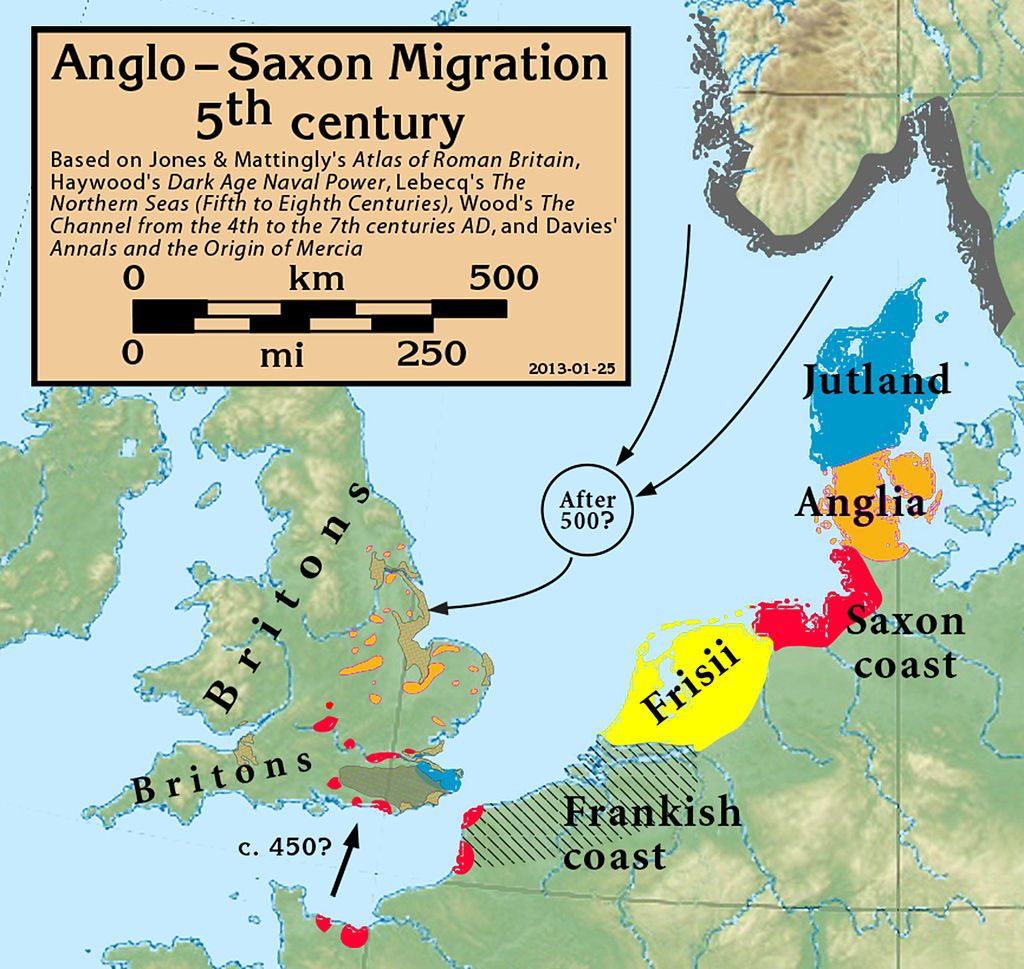![Anglo-Saxon reenactment [PHOTO: brainxpress.com]](https://historythings.com/wp-content/uploads/2016/07/Regia-Anglorum-Outside-2-723953-1024x669.jpg)
Anglo-Saxon reenactment [PHOTO: brainxpress.com]
England’s ancient past has been story after story of different cultures fighting for dominance. From the Celtic tribes and Romans to the Anglo-Saxons and the Celts, to the Anglo-Saxons and the Normans. Each invading culture dealt with the previous one in a different way. The Romans established their own settlements and put down every revolt they could find. They fashioned England into a trade hub between Rome and Gaul. The Normans dealt with the Anglo-Saxons in a similar way. They encastled themselves in huge fortresses and turned the Saxons into slaves to work their fields.
However, the Anglo-Saxons seems to have behaved differently with the indigenous Celtic tribes they found when they first moved to Great Britain during the 5th century. They absorbed the culture they found, rather than attempting to blot it out entirely.

PHOTO: wikimedia
The Anglo-Saxons were a Germanic people from the European mainland. Their culture greatly resembled what we might be familiar with as Viking culture. They were a warlike people. Their women held a great deal of independence, and they created beautiful jewelry and literature.
Around 540 AD, we see our first mention of the Saxons in Britain. A historian talks of a sort of deal that the Celtic tribes in Britain struck with the Germanic Saxons who wanted to move into the area. The Celts would yield land, and in turn, the Saxons would defend Britain against other warring tribes.
Eventually, however, war broke out between the Saxons and the native Celtic tribes. With their superior technology, the Saxons seem to have conquered the native tribes, even though the Celts outnumbered them four to one. Over time, the Celtic culture simply faded away into Anglo-Saxon culture.
How did this happen?
Well, the site at Rothley in Leicestershire may hold a clue.
Ancient Burial Grounds
Archaeologists from the University of Leicester were excavating a Bronze Age Barrow in Rothley. It was project to investigate how different generations of people re-used ancient sacred spaces.
The site dates back to the Neolithic period, around 4,000 to 2,000 BC. The barrow itself measures 30 meters in diameter. Hundreds of years of farming and plowing have all but destroyed most of the covering earth mound, but the actual ditch and the cremation burials were still intact. The barrow itself dates to 2000 BC. It’s near the Soar and Wreake Rivers, on high ground where the spirits of the dead could look out over the Soar valley and Rothley brook. Over a mile away, similar barrows around Cossington were excavated in 1991 and 2001.
Researchers say the barrow was a noticeable landmark by the Iron Age. The natives there might have forgotten its original purpose, but it still seemed to be an important, sacred site. Though the early Iron-Age inhabitants of Rothley built farms, they carefully dug their fields around the mound, taking care not to disturb it.
Later, when the Anglo-Saxons arrived, they quickly recognized the mound as an important ancient sacred site. The barrow became a landmark for an Anglo-Saxon cemetery around 700 AD.
![Pottery found at the Rothley Site [PHOTO: sciencedaily.com]](https://historythings.com/wp-content/uploads/2016/07/160721072831_1_540x360-300x168.jpg)
Pottery found at the Rothley Site [PHOTO: sciencedaily.com]
This find is not unique. It’s another puzzle piece in the narrative of Anglo-Saxon culture in ancient Britain. The Saxons had a habit of re-using ancient barrows across the English landscape. They recognized the important the barrows to the native people, and re-purposed these sacred spaces to connect their own people with the dead ancestors, branding their mark on the land.
It was through methods like these that the Anglo-Saxons would eke out a space for themselves among the Celtic tribes and, eventually, absorb all others to become the dominant culture in Great Britain until the Norman invasion of 1066.

